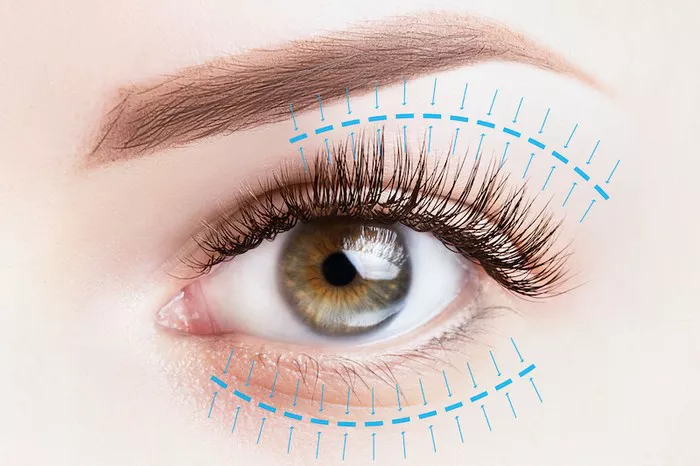Eye fat removal surgery, technically known as blepharoplasty, is a popular cosmetic procedure aimed at rejuvenating the appearance of the eyes. It is often sought after to address concerns such as puffiness, excess fat deposits, and sagging skin around the eyes, which can make individuals appear tired or older than they feel. However, one common question that arises regarding this procedure is whether the results are permanent. In this comprehensive article, we will explore the intricacies of eye fat removal surgery, including how it works, what to expect in terms of long-term outcomes, and whether the results truly stand the test of time.
Understanding Eye Fat Removal Surgery
Eye fat removal surgery, or blepharoplasty, is a surgical procedure designed to enhance the aesthetics of the eyelids. It can target both the upper and lower eyelids to address specific concerns:
Upper Eyelids: Upper eyelid surgery typically involves the removal of excess skin and, in some cases, underlying fat. It aims to correct drooping eyelids and restore a more youthful, refreshed appearance.
Lower Eyelids: Lower eyelid surgery may involve the removal or repositioning of excess fat, often referred to as “eye bags,” as well as the removal of excess skin. This helps reduce puffiness and improve the contour of the lower eyelids.
The procedure can be performed on its own or in combination with other facial rejuvenation treatments to achieve a more comprehensive facial enhancement.
How Eye Fat Removal Surgery Works
Eye fat removal surgery is a precise and delicate procedure that requires the expertise of a skilled plastic surgeon. Here is a general overview of how the surgery works:
1. Consultation: The process begins with a thorough consultation between the patient and the surgeon. During this consultation, the surgeon assesses the patient’s concerns, evaluates their facial anatomy, and discusses their aesthetic goals. This consultation is crucial to determine the appropriate surgical plan.
2. Anesthesia: On the day of the surgery, the patient is administered anesthesia to ensure comfort and pain control during the procedure. The type of anesthesia used (local or general) may vary depending on the extent of the surgery and the surgeon’s preferences.
3. Incisions: The surgeon makes discreet incisions in the eyelid area, often following the natural creases of the eyelids for upper eyelid surgery. For lower eyelid surgery, the incisions may be placed just below the lower lash line or, in some cases, on the inner surface of the lower eyelid (transconjunctival approach). The choice of incision location depends on the patient’s unique needs.
4. Fat Removal or Repositioning: In cases where excess fat contributes to puffiness or under-eye bags, the surgeon carefully removes or repositions the excess fat. The goal is to achieve a smoother and more youthful contour while maintaining a natural appearance.
5. Skin and Tissue Adjustment: The surgeon may also make adjustments to the underlying tissues and remove excess skin as needed to achieve the desired aesthetic outcome. This step helps address issues such as sagging skin or hooded upper eyelids.
6. Incision Closure: Once the necessary adjustments have been made, the surgeon closes the incisions with sutures. These sutures are typically very fine and designed to minimize scarring.
7. Recovery and Healing: After the surgery, patients are closely monitored during the initial recovery period. It’s normal to experience some swelling and bruising, but these side effects subside gradually over a few weeks.
Long-Term Outcomes of Eye Fat Removal Surgery
Now, let’s explore the key question: Are the results of eye fat removal surgery permanent? The answer is nuanced and depends on various factors:
Aging Process: While eye fat removal surgery can provide long-lasting improvements, it does not halt the natural aging process. Over time, the skin will continue to age, and some degree of sagging and wrinkling may reoccur.
Lifestyle Factors: Lifestyle choices, such as sun exposure, smoking, and skincare routines, can significantly impact the longevity of the results. Protecting the skin from UV damage and following a healthy skincare regimen can help maintain the benefits of the surgery.
Individual Variation: The longevity of results can vary from person to person. Factors like genetics and skin quality play a role in how well the surgical improvements hold up over time.
Maintenance: While the results of eye fat removal surgery are long-lasting, they are not entirely permanent. Patients may choose to undergo additional procedures or non-surgical treatments in the future to maintain their desired appearance.
Conclusion
Eye fat removal surgery, or blepharoplasty, is a highly effective procedure for rejuvenating the appearance of the eyes by addressing concerns such as puffiness, excess fat, and sagging skin. While the results of the surgery are long-lasting, it’s important to understand that they are not permanent. The natural aging process, lifestyle factors, and individual variation can influence how well the surgical improvements hold up over time.
To maintain the benefits of eye fat removal surgery, patients are encouraged to protect their skin from sun damage, follow a healthy skincare routine, and consider additional treatments or procedures as needed in the future. Consulting with a board-certified plastic surgeon who specializes in facial rejuvenation can provide valuable insights and guidance regarding the best approach to achieve your aesthetic goals while maintaining a youthful and refreshed appearance.

